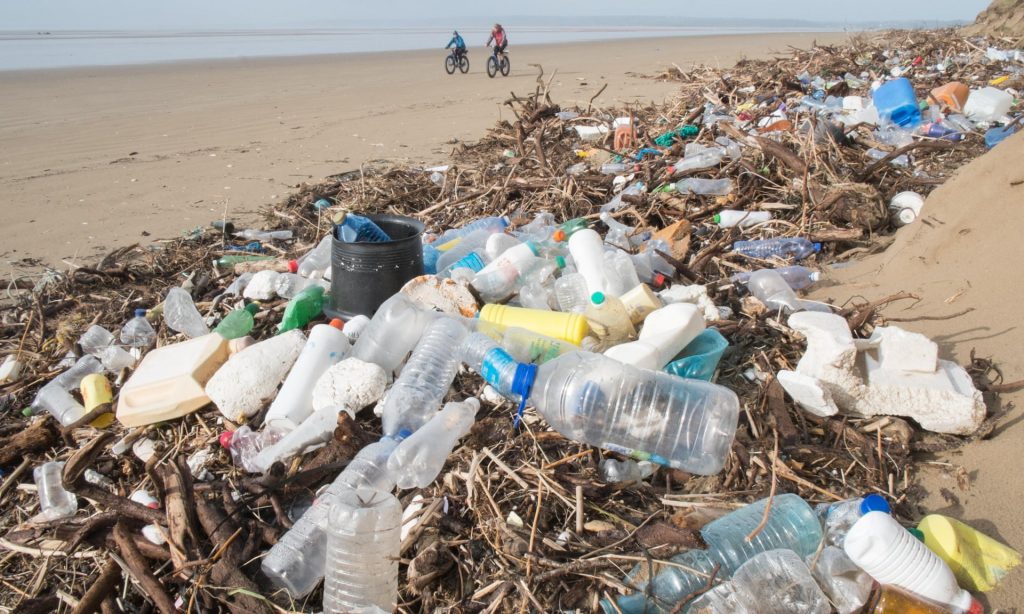It is important for our physical products to have a reasonable environmental footprint. We print on recyclable paper with soy-based inks. We do use a thin plastic to protect our products while on our distributors shelves, and are looking for a non-oil-based plastic to replace the current product. For external packaging we use bubble-wrap and cardboard boxes. The bubble-wrap is also unfortunately an oil-based plastic, and with most plastics are non-biodegradable.

The Problem with Plastics
The problem with plastics are several:
- Source material (petroleum-based, non-sustainable)
- Non-biodegradable (also, non-compostable)
- Non- or limited recyclability
- Non- or limited reusability
The combination of limited recyclability, limited reusability, and a very limited lifespan (during shipping only), makes for a significant impact. We are looking at reducing and changing the nature of the plastics to help reduce the environmental impact:
- Source material of plastics (wrapping of product for display) to be cellulose-based (non-petroleum), which will increase biodegradability as well as reduce energy costs
- Replace plastics packing material (bubble-wrap) with (small) cardboard boxes, which will potentially increase reusability, recyclability, and bio-degradability.
Interestingly, plastics are much less of a problem if they last a lot longer than a single-use visit from a store. Bridges are being made of plastic, and made to last 100 years. Recently, Rotterdam began building several bridges mad of plastic, and the US Army has one made to support a 70-ton tank. There are even plastic bridges able to support 120 ton locomotives, and made from recycled plastic. The virtually maintenance-free aspect of plastic building materials is an enormous cost savings:
The recycloplast bridges are also said to be corrosion resistant compared to other bridge materials, meaning that they need almost no maintenance. Steel structures typically need regular repainting and inspection to guard against rust: timber needs expensive and potentially troublesome coatings or treatments. Procurement officials estimated that there would be a 34 to 1 return on the extra expense of the plastic bridges from reduced maintenance costs.
Cellophane as a Plastic Substitute Wrapping
Cellophane, made from plant material, and biodegradable or at least compostable (at least some brands/manufacturers) is a viable substitute for plastic wrapping, and if cost effective would be a safe form of wrapping and packaging (safe in terms of disposability). However there are harmful chemicals as well as energy used in the production process of cellophane. It is important to use uncoated cellophae for the most bio-degradable/compostable option.
Note, however that cellophane (untreated) is semi-permeable, but it can be treated with nitrocellulose or wax to make it impermeable to water vapor. It may also be coated with polyethylene, making it heat-treatable (shrink-wrap/sealable). Note that the actual compostability and bio-degradability will depend on the characteristics of the wax or nitrocellulose coating. Polyethylene is definitely a plastic will all the negative impacts.
Different cellophane grades are available in various markets, including:
- Uncoated,
- VC/VA copolymer coated (semi-permeable),
- Nitrocellulose coated (semi-permeable), and
- PVDC coated cellophane film (good barrier, but not fully biodegradable)
Note that various vendors and manufacturers will likely have slightly different variations and more coating options.
Cellulose Tape
While apparently the UK brand Cellotape has become a polypropylene plastic, there are still manufacturers of Cellulose Tape, including T.R.U. Cello and Shurtape on Amazon.com, and UNITAPE and Louis Tape in Thailand. These handily replace most uses for tape with a bio-degradable and/or compostable option.
Cardboard Boxes
Cardboard is (when uncoated by plastics) generally compostable, recyclable, and possibly reusable. Cardboard can be printed on as well, or the addition of a printed cellophane wrapper can meet many needs. The question will come down to affordability with locally sourced cardboard.
First Steps Toward Sustainable Packaging
- Plastic --> Cellophane
- Plastic Tape --> Cellophane Tape
- Packing Material --> Uncoated Cardboard
Certification of Sustainable Packaging
There is a company (Tuv Solutions) that certifies Belgian and Austrian products as being bio-sourced, bio-degradable, and/or bio-compostable. This is a good place to start to determine what are the requirements for various certifications.
It is interesting (alarming, actually) that some so-called bio-degradable plastics are only bio-compostable and will not degrade in most landfills and not in the ocean (as they require 50c temperatures to break down). Also, many bio-degradable plastics simply break down into microplastics, which then end up in our oceans and enter the food-chain, nonetheless.
The Future of Plastics
Shockingly, there will be more plastic than fish in our oceans, by weight, by 2050. Microplastics that start out as microplastics are particularly insidious (increasingly banned but still found in some exfoliants and some toothpastes).